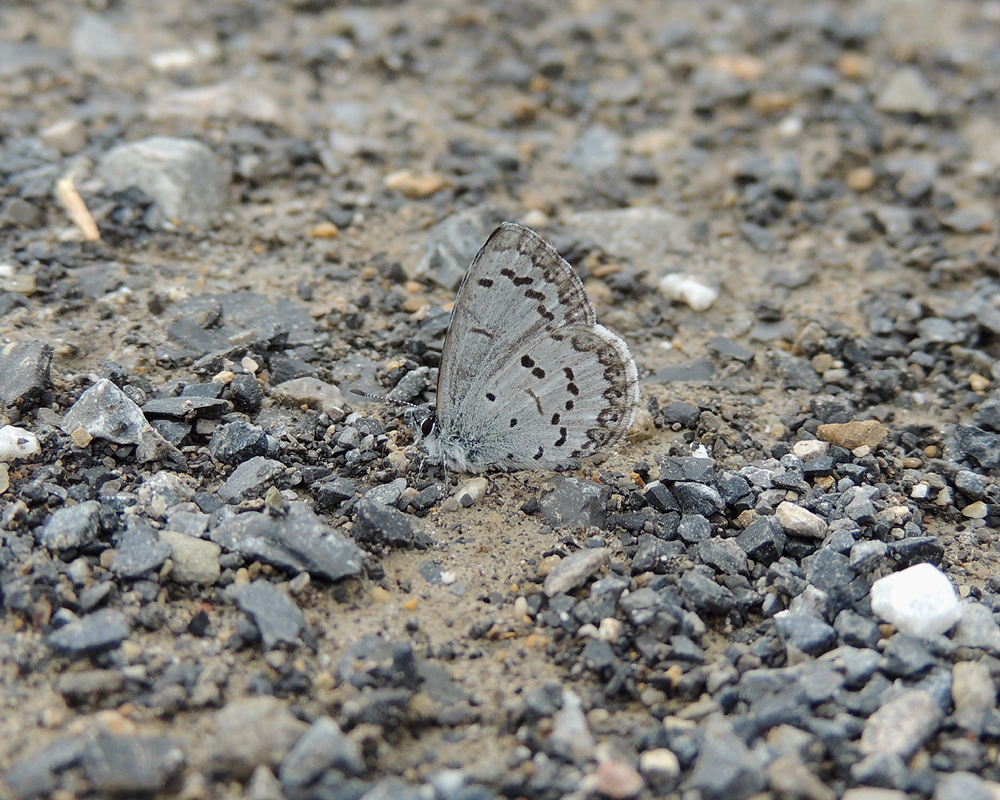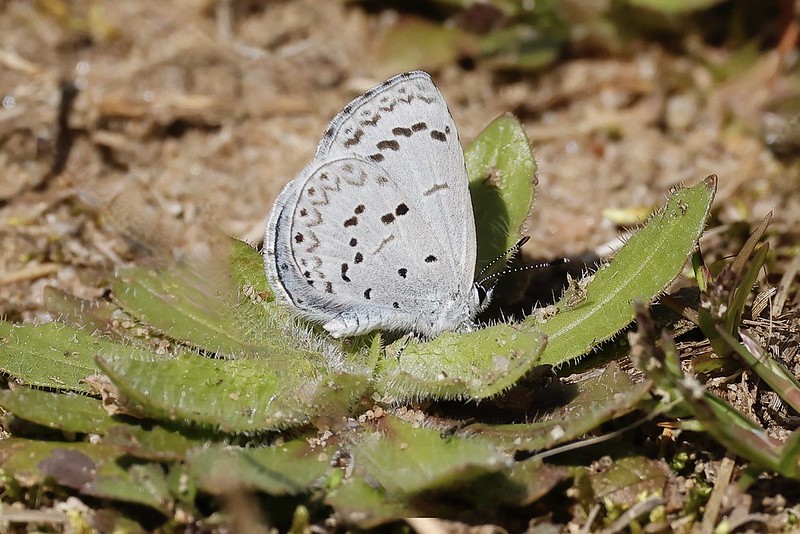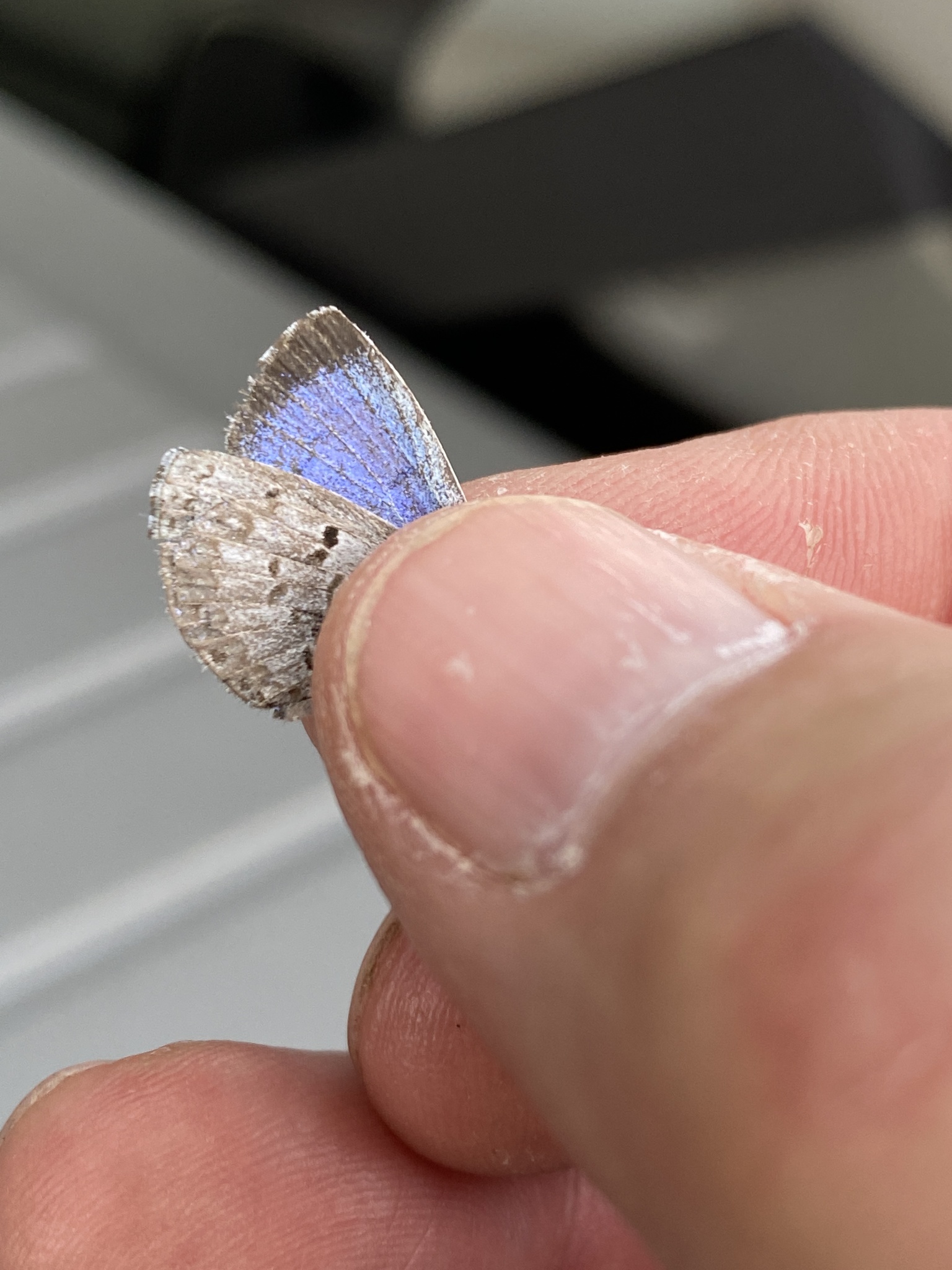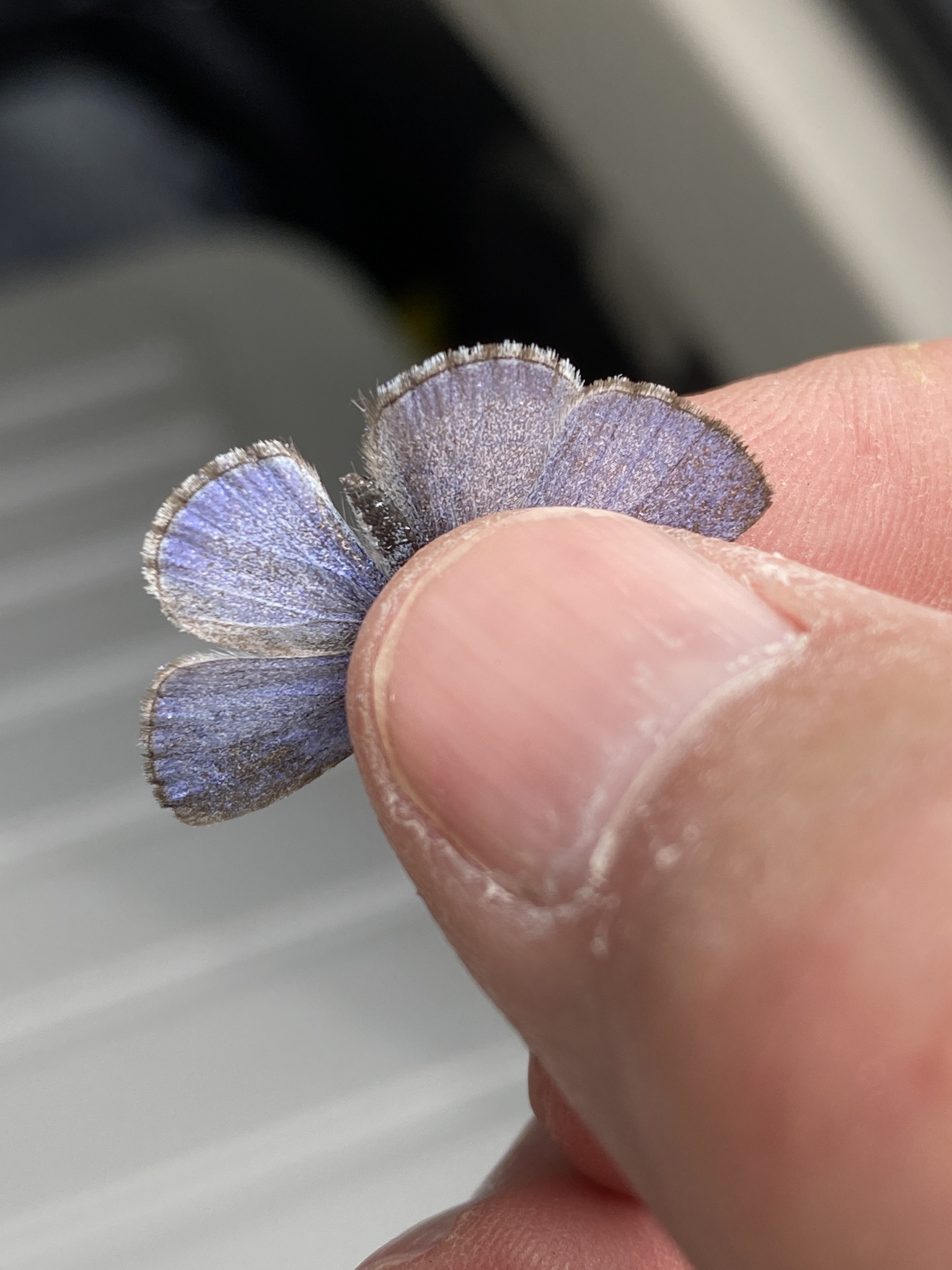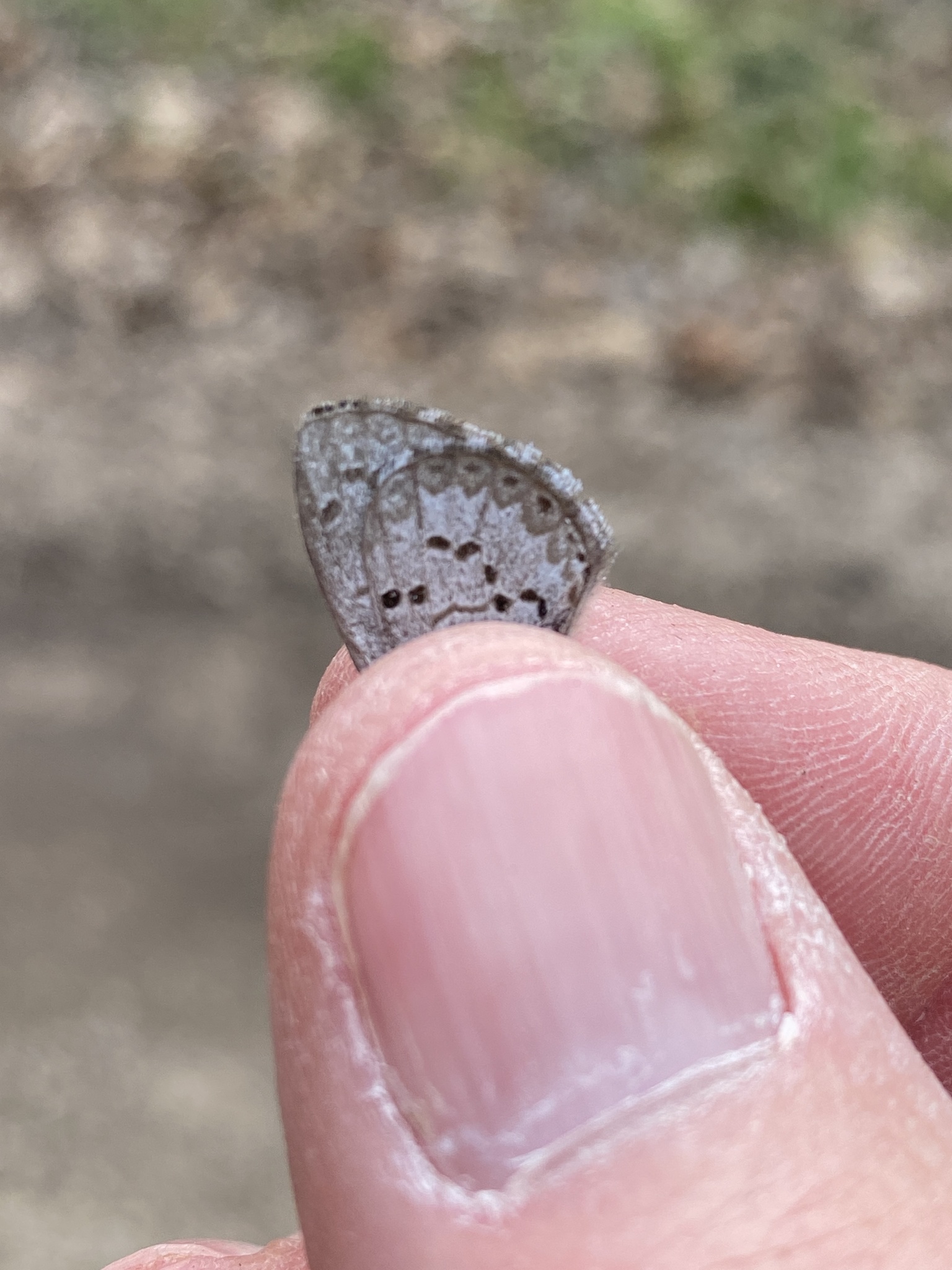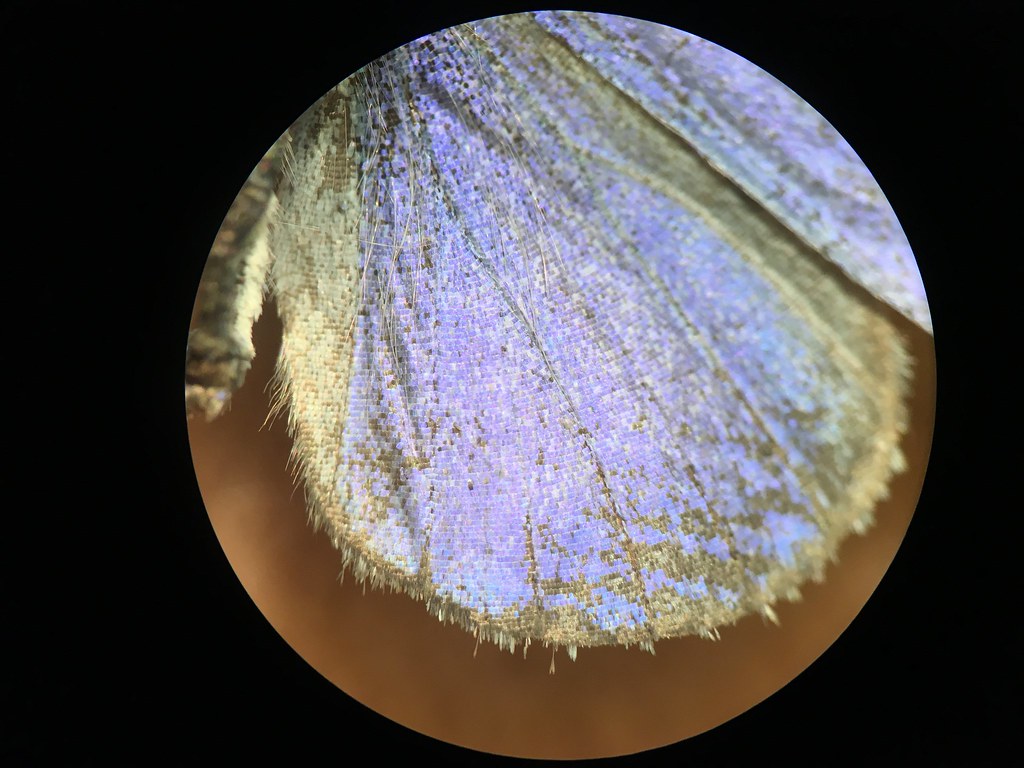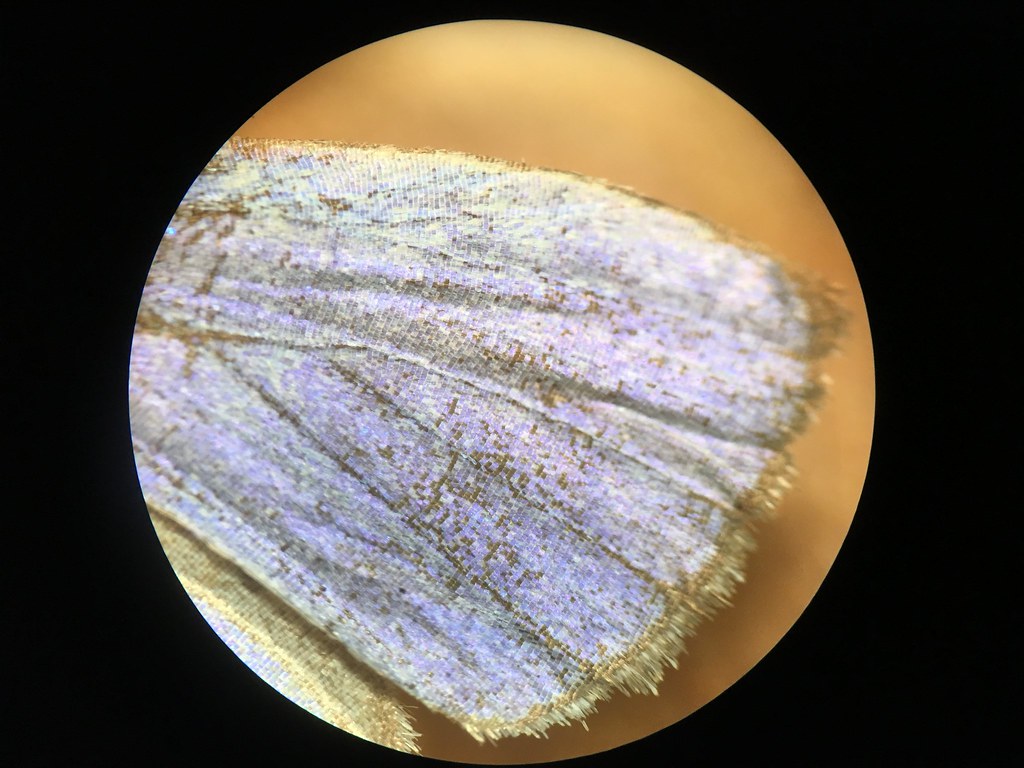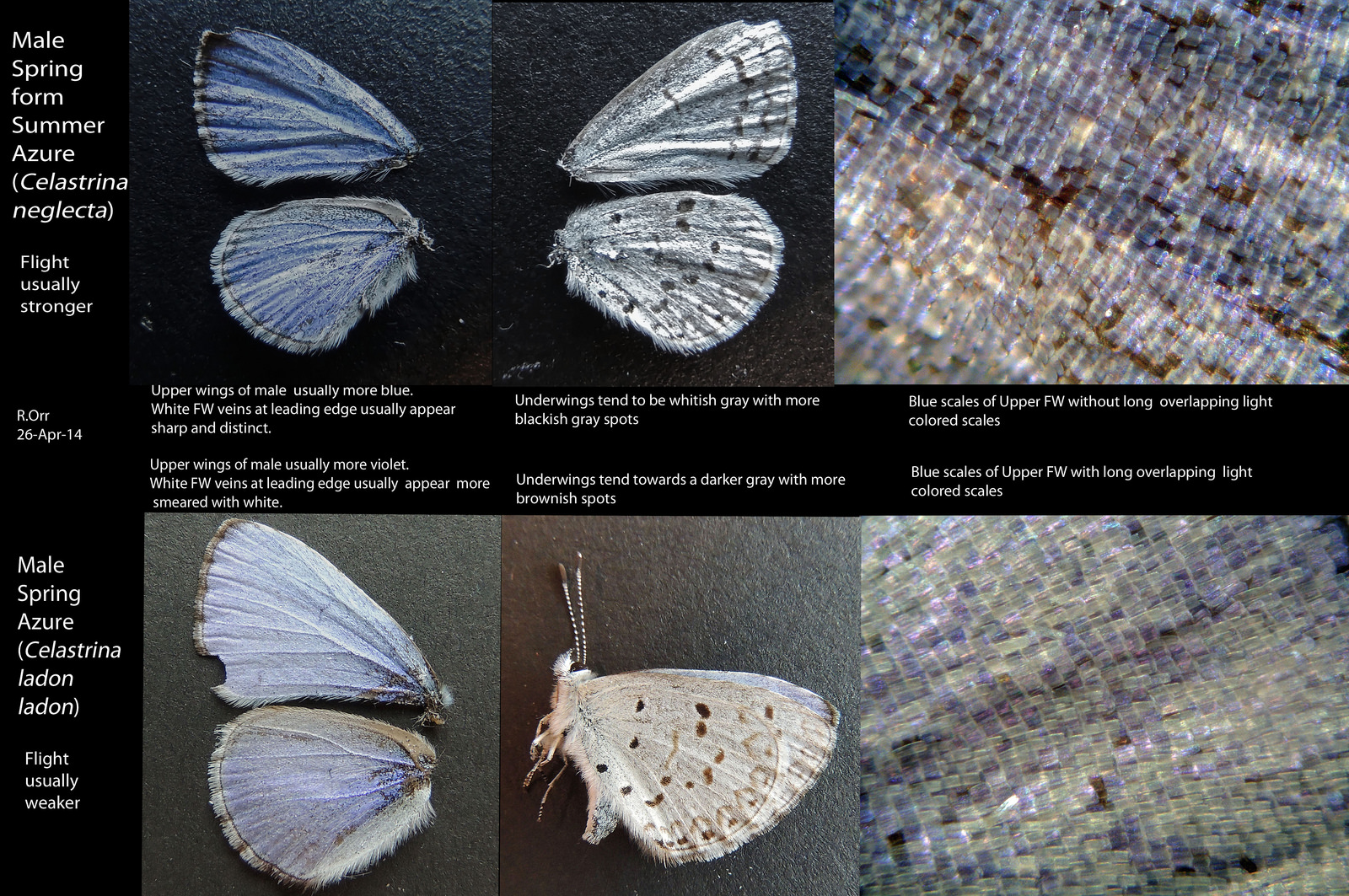Map Snapshot
























143 Records
Status
Spring Azure (Celastrina ladon) is part of the infamous azure complex, which contains some of the most challenging eastern butterflies to identify to species. A number of populations are separated temporally, or by host plant association, but may occur sympatrically at the same locality. Several new species have been described in recent years, and more may await. Spring Azure (s. l.) formerly included a number of these distinct populations, but many have now been determined to be distinct species. This species, as currently defined, flies from early April to early May in Maryland (Butterflies of Maryland: A Biological Summary and Checklist by Lynn Davidson & Richard Smith).
Description
Under microscopic examination, the scalation of the male upperwing is distinctive. The male of ladon is unique among our blue azure species in lacking the scent-producing androconia scale patches. The appearance of the blue upperwing also differs subtly from the spring form of Summer Azure, and may appear more violet in hue (various pages on Rick Borchelt's fantastic blog https://leplog.wordpress.com/).
Relationships
This species apparently uses dogwoods (genus Cornus), Black Cherry (Prunus serotina), and blueberries (Vaccinium sp.) (Butterflies of Maryland: A Biological Summary and Checklist by Lynn Davidson & Richard Smith).
Seasonality Snapshot
Source: Wikipedia
| Spring azure | |
|---|---|

| |
| Male, Cougar Mountain Regional Wildland Park, Washington, United States | |

| |
| Female, Panama | |
| Scientific classification | |
| Domain: | Eukaryota |
| Kingdom: | Animalia |
| Phylum: | Arthropoda |
| Class: | Insecta |
| Order: | Lepidoptera |
| Family: | Lycaenidae |
| Genus: | Celastrina |
| Species: | C. ladon
|
| Binomial name | |
| Celastrina ladon (Cramer, 1780)
| |
Celastrina ladon, the spring azure or echo blue, is a butterfly of the family Lycaenidae. It is found in North America from Alaska and Canada south of the tundra, through most of the United States except the Texas coast, southern plain and peninsula Florida; south in the mountains to Colombia, also on Molokai island, Hawaii.[citation needed]
Since the publication of a monograph on the Lycaenopsis group of lycaenid genera in 1983 by Eliot & Kawazoe,[2] C. ladon has been considered by some taxonomic authorities to be a subspecies of C. argiolus (Linnaeus, 1758). Other authorities still consider C. ladon and related species C. neglecta and C. serotina to be "full" species.[3][4][5][6][7]
Its wingspan is 22–35 millimetres (0.87–1.38 in). The metallic blue wings have a black margin in females. The undersides of the wings are white with speckles.[8]

Similar species
[edit]- Cherry gall azure (C. serotina)
- Holly azure (C. idella)
- Lucia azure (C. lucia)
- Summer azure (C. neglecta)
References
[edit]- ^ "NatureServe Explorer 2.0 Celastrina ladon Spring Azure". explorer.natureserve.org. Retrieved 20 September 2020.
- ^ Eliot, J. N. and Kawazoe, A., 1983. Blue butterflies of the Lycaenopsis group: 1-309, 6 pls. London.
- ^ Cherry Gall Azure full species status, BugGuide.com
- ^ Spring Azure, Butterflies of Canada
- ^ Spring Azure Archived 2009-03-13 at the Wayback Machine, Butterflies and Moths of North America
- ^ Spring Azure, Encyclopedia of Life
- ^ Celastrina at Markku Savela's website on Lepidoptera
- ^ Will, Kip; Gross, Joyce; Rubinoff, Daniel; Powell, Jerry A. (2020). Field Guide to California Insects. Oakland, California: University of California Press. p. 406. ISBN 9780520288744.

